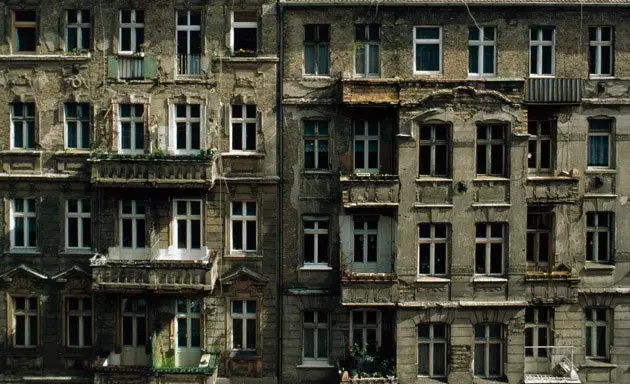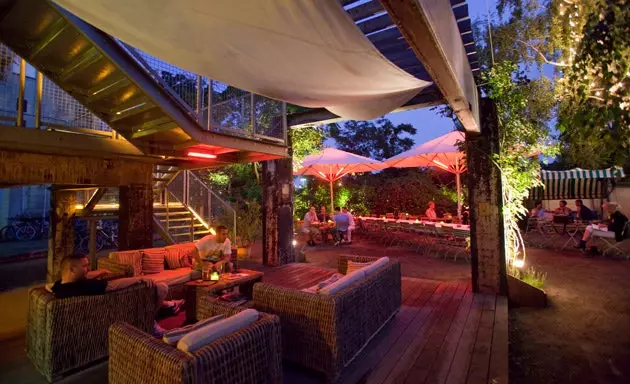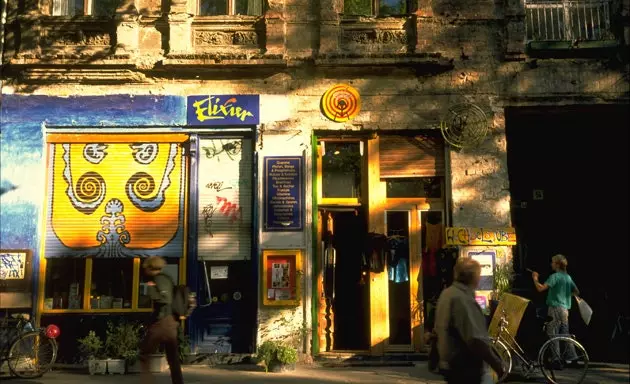
Facade of a building in Prenzlau hill, Berlin, the paradigm city of gentrification
In kill your idols (Books of the K.O.), Luc Sante describes the gentrification process from New York since the 70's . He first evokes, with a contained but subtle post-apocalyptic prose, the landscape of the neighborhoods where he spent his youth and forged himself as a writer, among junkies, fires and abandoned flats. Without melancholy, but with amazement: “The New York that I lived in, on the contrary, was experiencing a rapid regression. This was a ruin in the making, and my friends and I were camped in the midst of its fragments and burial mounds. It didn't bother me, rather the opposite. The decay captivated me and yearned for more: magnolias growing out of cracks in the asphalt, ponds and streams forming into towering blocks and slowly making their way to the shore, wild animals returning after centuries of exile.
Then he tells the reconversion of the city , hand in hand with Mayor Giuliani's messianic and corrupt crusade: “Meanwhile, his legacy has been a New York City that has bled much of his identity. It is a city of million-dollar franchises and shacks, of minimal utilities and favoritism taxes, of a corporate Times Square and whitewashed Harlem. There is less dialogue and exchange between classes than ever before and what little life, vigor and color the city has left has much to do with Giuliani's inability to do away with rent control laws altogether. In a generation or two, the city he has left could be swapped with Phoenix or Atlanta, except for its geographical oddities. However, it must be said that the trains have already stopped running on time.”
Gentrification is a complex process that also affects all European cities . Grotesquely simplifying, the process always follows the same pattern: the call of the bohemian attracts increasingly wealthy young people, which translates into rising rental prices, the disappearance of old businesses and their replacement by boutiques, delicatessens and design hotels. The economic level of the neighborhood rises, crime decreases and former residents leave the place in search of other more affordable areas. It would be said that It is a process as old as civilization itself. . In Spain, paradigmatic cases could be: Chueca, in Madrid, El Born in Barcelona or El Carmen in Valencia.
But if there is a city pioneer in urban metamorphosis , that is berlin . After the fall of the wall, the city was filled with young rebels from all over the continent, who occupied the central neighborhoods of the former East Berlin. mitte, Prenzlauer-Berg , and to a lesser extent Friedrichshain , offered a decadent and captivating landscape: old houses with high ceilings, large windows and wooden floors, streets with uneven sidewalks and cobblestone roads. Coal stoves to feed as in a workman's fable by Charles Dickens , nothing to do with the aseptic and mathematical white radiators at dad's house. Clandestine bars in the basements of houses, cheap food, constant legends, uniformed population with second-hand clothes, squats, lazy after-dinner conversations, popular foods, streetcars and sausages.

Bar Bierhof Rudersdorf in the Friedrichshain district
The gentrification of Berlin offers, however, a more subtle setting, perhaps a bit more cynical, although aesthetically more welcoming. Two decades after the fall of the wall, in these neighborhoods the brand of international franchises is still despised, but in its place chains of Pizzerias with popular dining aesthetics , with graffiti on the walls and revolutionary proclamations; but franchise, after all. There are hardly any Starbucks, but the coffees imitate the same Italian sound of these and their same absence of caffeine. The facades of the houses have already been restored and the radiators replaced the coal stoves, a necessary toll to go from bohemia to comfort.
Communist iconography is a pop proclamation and the little street stall of currywurst (curried sausage, that amazing local gastronomic craze that elevates junk food to cosmopolitan awesomeness) has added a little wintry dining room under a plastic tarp, with some weird retro-futuristic chairs that look like something out of a minimalist tearoom in Stockholm.
Some old laundries have been converted into elegant wine cellars with psychedelic decor, so that the modern can wash their clothes feeling like a French intellectual from 68. The most amazing and most welcoming effect of this transformation has been the unusual population explosion in neighborhoods like Prenzlauer Berg and your postcard from young fathers taking their children in carts pulled by bikes on the way to the ecological market . Outside of the darkest winter months, certain neighborhoods in Berlin look like an alternative upper-middle-class utopia. A strange contraption that makes you want to stay and live.

Mitte district in Berlin
Meanwhile, other peripheral neighbourhoods, oblivious to gentrification, continue to be installed in an indestructible eighties aesthetic, capable of sneaking even into the modern heart of the city in the form of a drugstore window or a real estate agency's neon sign.
In the bars where food is not served, they still allow smoking and it is easy to find one of these bars open at any time of the morning, any day of the week. You can find a lonely man reading by candlelight, a couple drawing plans, surrounded by glasses of beer as imaginary columns, and the waiter, dressed as a Hell's Angel, will address you with the delicacy and formality of a doorman. of the Barrio de Salamanca. His words will sound as soft as the barely perceptible musical thread of heavy metal, in what constitutes a sonorous oxymoron that perfectly defines certain sublime extravagances from this city.
The halls of Humboldt University still smell of an indefinable mixture of bleach and mashed potatoes, which I still perceive as the most welcoming scent in the world , at the height of my grandmother's snack porridge. As Marx's phrase says, written in gold letters on the main staircase of Humboldt University: Philosophers have so far limited themselves to interpreting the world, the time has come to change it.
Cities change. And I dare not interpret or judge them. I just describe them.
